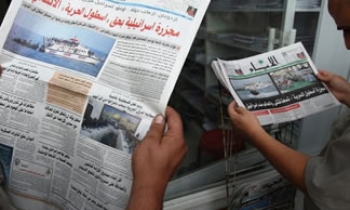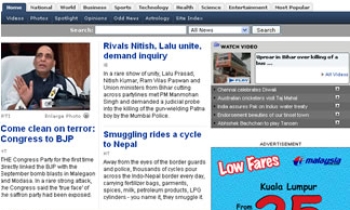New Delhi, Nov 4: Not many know that the 1857 War of Independence witnessed the first journalist martyred in the cause of the freedom of India and of the press.
The fearless scribe, Moulvi Muhammad Baqar, did spot coverage of the uprising in Delhi and carried the report in the May 17 issue of his Urdu weekly ‘Delhi Urdu Akhbar’.
It was an eyewitness account of the gruesome suppression of the spontaneous mass uprising.
Naturally, his name immediately found place in the hit list of ‘’mutineers’’ prepared by the East India Company officials.
The courageous soul was made to stand before the mouth of a canon and blown to pieces in an open field outside the Delhi Gate immediately after the British suppressed the ‘’mutiny’’.
Moulvi Baqar had served in the British Collector’s office and knew the ‘Firangi’ mind and mode of administration inside out, which proved to be an asset for him as a journalist as it was coupled with a flair for writing.
He launched his journal in 1837, and it had to change its name twice under the prevailing circumstance, but was for the most part called ‘Delhi Urdu Akhbar’.
Writing incognito, he carried out a crusade against the British till his killing immediately after the First War of Independence.
With his death, ‘Delhi Urdu Akhbar’ was also silenced.
His young son Maulvi Muhammad Hussain Azad, a renowned poet, prose writer and historian of Urdu language, escaped a warrant of detention issued against him by the British for his ‘’seditious’’ writings in his father’s weekly which carried his name as editor for sometime.
The story of Moulvi Baqar and his son finds place in the book ‘Urdu Sahafat ka Safar(A story of Urdu Journalism) written by veteran journalist Gurbachan Chandan. The book was released here this week.
The book covers the fascinating history of Urdu journalism through a period of about three centuries from the 18th century onwards.
The Urdu journalism can trace its roots in ‘waqianigars’(news reporters) who were in fact intelligence purveyors of the Mughul rulers, and started their profession following their retrenchment after the death of Aurangzeb and subsequent decline of the Moghul Empire.
Out of job, they launched their private newsletters called ‘Akhbar’(newspaper). Though these ‘akhbars’ were in Persian, the then language of the administration and the court, but the tradition of the opposition to the ‘Firangi Hukumat’(Bristish rule) they set in, was avidly followed by suceeding Urdu scribe who coincidentally started their work in the North with the arrival of the printing machine.
Since then Urdu journalism did not look back and achieved its heights during the peak of the freedom movement, says the book, which is a compilation of 17 articles.
There is a well-researched article on the causes of the closing down of the revolutionary journal ‘Al Hilal’ brought out by Maulana Abul Kalam Azad.
The weekly had published some photos and write-ups, relating to the first World War, which the author says were a great scoop from any journalistic standard. This promted the English editor of the ‘Pioneer’ published from Allahabad to launch a tirade against the weekly recommending its closure, an advice followed blindly by the British authorities.
A number of articles in the book, written after extensive and deep research, are devoted to the united response of the nation to the onslaught on the freedom and sovereignty of the nation.
“In this 150th anniversary year of the Great revolt of 1857, our first popular war of independence, the book makes it a point to delineate the Indian face of Urdu journalism, the second oldest language pillar after Bengali,’’ says the introduction of the book.









